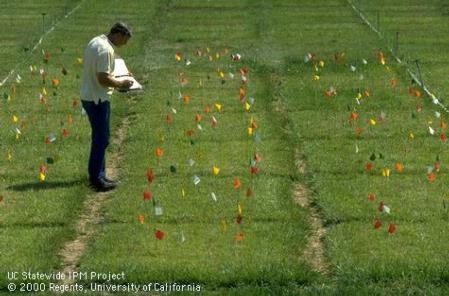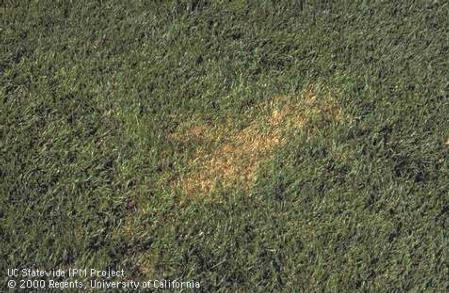
Posts Tagged: turfgrass
Mowing your Lawn and “Grasscycling”
Mowing habits have a big impact on lawn appearance and health. Improper mowing can lead to thinning, weeds, pests, buildup of debris, and more. Cutting your grass to the right height at the right time can do much to help keep your lawn healthy and beautiful.
UC ANR’s Mowing Your Lawn and “Grasscycling” publication can help you determine how much and how often to cut. Topics include:
- How high to mow?
- When to mow?
- What to do with the clippings?
- Mowing equipment
- Mower safety
- Additional mowing tips

UC IPM’s Green Bulletin
Written for pest management professionals and pesticide applicators the UC IPM Green Bulletin shares resources and research to benefit these groups. As is often the case with UC resources, while they might be designed for specific groups, others may also benefit and gain knowledge.
The new edition of the Green Bulletin contains the following articles:
- Natural Herbicides: Are They Effective?
- NPIC: A Good Source of Pesticide Information for Your Customers
- Alternative Turf Demonstration Project
- UC IPM Offers new Free Online Courses
- Ask the Expert!
Current and back issues of the Green Bulletin can be found on this page of UC’s Integrated Pest Management site.

Lawn Diseases: Prevention and Management
UC’s recently updated Lawn Diseases: Prevention and Management publication packs a lot of knowledge in an easy to digest compact format.
From the publication:
“Maintaining a healthy, vigorously growing lawn is the best way to prevent a severe disease outbreak in turfgrass. Each square foot of turf contains about 500 to 1,000 individual plants, each requiring optimum amounts of water and fertilizer, the right mowing regime, and an aerated, well-drained soil. If any of these factors are missing or in excess, the grass may become stressed and more susceptible to disease.”
The authors provide tables to help detect disease and irrigation requirements. Tips to avoid lawn disease from happening can be found throughout this free resource.

No-Mow Fineleaf Fescue Grasses for California Urban Landscapes
Due to their low-maintenance, low-input, environmentally friendly features fineleaf fescue species are becoming increasingly popular choices in urban landscapes.
All species of fineleaf fescues are perennial, cool-season grasses. Potential sites for these grasses include: slopes, median strips, golf course roughs, cemeteries, untrafficked areas of parks, and industrial, commercial and home landscapes.
UC’s No-Mow Fineleaf Fescue Grasses for California Urban Landscapes provides information beneficial to those who have fineleaf fescue on their property and those considering doing so.
Topics include:
- What is fineleaf fescue
- Performance evaluation
- Sodding research,
- Selecting species and cultivars
- Establishment
- Irrigation
- Fertilization
- Weed control
- Disease management
- And more
Green Bulletin
The February 2011 issue of UC IPM’s Green Bulletin has many practical and relevant articles for pest management professionals and pesticide applicators.
The featured article is titled, Ways to calibrate spray application equipment. Illustrations, conversions, and formulas needed to apply the proper amount of pesticide for any given area are included. Applying only the recommended amount of chemicals may reduce the amount of pesticides that runoff or leach into groundwater. Precision can also save applicators time and money.
Other articles in this addition may also appeal to home gardeners. Common turfgrass species provides text, photos and illustrations to help identify turfgrass species. Guide to common weeds in lawns in California features photos and text of the eight most common lawn weeds found in California. Brief general management instructions are also included along with a link for more detailed information.
The Ask the Expert! section provides an assortment of information including why people should never wear cloth hats or caps while spraying pesticides. Do you know why? The cloth hats can absorb pesticides and keep them on your skin. If you wear a hat while spraying be sure it is made of plastic or another material which does not absorb water.
Common turfgrass species and Guide to common weeds in lawns in California are available in Spanish.

